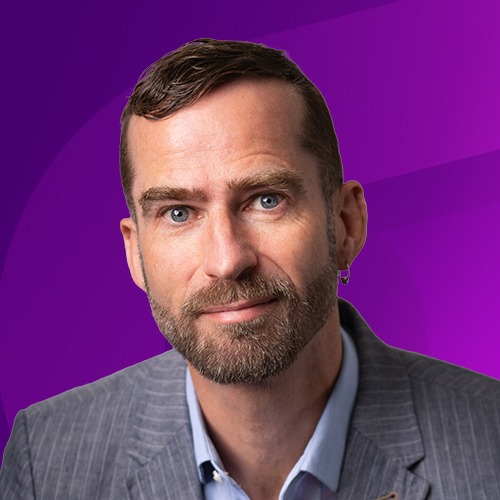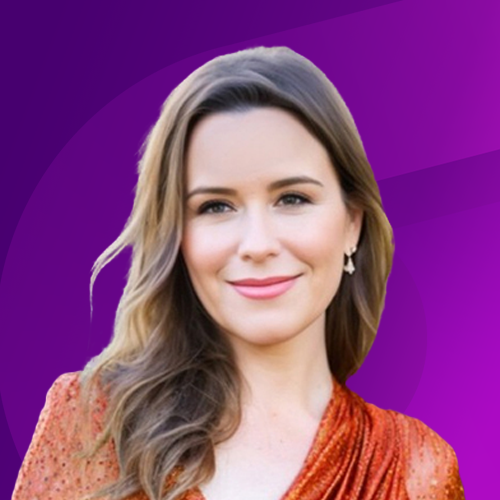The Gamechangers in Resilience series spotlights leaders who redefine the boundaries of resilience. Today, we’re featuring James Mitchell, a seasoned executive known and respected for his strategic impact across IT and organizational resilience across industries and companies of different shapes and sizes. His visionary approach has consistently driven advancements in how companies understand and implement resilience practices. Today, James has taken on a broader role leading the continuous innovation of the profession, including how to train and enable the next generation of IT resilience professionals.
Q: What drew you to resilience and what key lessons have you learned along the way?
James: The genuine sense of making a difference for an organization or community is what draws me to the resilience profession. Closely related would be that I genuinely appreciate and value the people who do this work. Their commitment and dedication to doing very hard things on behalf of others is inspiring.
In many ways, my career has evolved much as the profession has evolved. I began my professional career focused primarily on IT Service Management in the early 2000s. As with many professionals, my entry to the world of resilience began with my employer (Invesco) asking if I would be interested in something no one else really wanted to do: IT Disaster Recovery! After a couple of years developing IT Disaster Recovery from a regional practice to a global practice and supplementing that with the development of an IT Crisis Management capability, I reached a crossroads where I really needed to choose between the two professions in order to drive my career forward. From then until now, I’ve worked inside and outside of IT, I’ve worked in Business Continuity, Emergency Management, Crisis Management, and still more Disaster Recovery. I worked in multiple industries such as financials services (Invesco), energy (BP), healthcare (Texas Children’s Hospital, Traditions Health) and back to financial services again (Jack Henry). In all of these roles, I was tasked with leading transformative efforts to build or rebuild programs to meet the current and evolving needs of an organization.
Q: How have conversations in risk and resilience evolved in recent years?
The evolution of the conversation is contained in the question itself. That we talk about risk and resilience in the same sentence and see them as conjoined says much about where we are today. You see it represented in job postings and conference topics as well as organizational structures. We are all still working to figure out the best way to understand the risks organizations face and develop appropriate resilience capabilities. For example, how often do we see organizations pair business continuity with emergency management when seeking to fill leadership roles? Further, where do these professionals reside in the organization? I’ve been placed within IT, Data Center Facilities, Risk/Legal and Risk/Non-Legal. I’ve reported to CISOs, CROs, CLOs and CIOs. While these differences may reflect all sorts of factors, they clearly reflect a lack of common agreement on what exactly we are protecting and HOW we are doing so.
While I’m not suggesting there is a single, correct answer, it’s becoming far better understood that resilience requires the development of real capabilities that span the entire organization.
Everyone has a part to play and the resilience professional is often the key integrator or conductor of these disparate pieces.
This is why I believe we are seeing a significant rise in senior level resilience positions that are focused solely on resilience rather than combined with facilities, technology or even cyber security.
Q: What are the themes or lessons that come up most often?
James: If there are common themes, other than resilience, throughout my career they are:
• People come first: family, team, organization and community.
• Resilience is a competitive advantage. Invest accordingly.
Two lessons have surfaced repeatedly along the way:
1. People are the product
This was a key lesson leadership during my time at Invesco and has stayed with me to this day. At times, a leader is fortunate to have a strong “people first” culture across the organization. At other times, a leader must create a “people first” culture within their team to protect against a broader, toxic culture. I’ve experienced both and one is clearly better than the other! At the end of the day, we serve people (customers/community) and we do so THROUGH our people (team/organization). Resilience is all about people serving people and doing so in the most effective way possible given circumstance of industry, community, etc.
2. Resilience is a bespoke endeavor
I appreciate regulatory requirements and various organizations that seek to standardize language and principles. That being said, every community, organization and industry is unique. Especially when we are looking at individual organizations, there are significant differences in culture, knowledge, risk appetite, tolerance for change, organizational structure and even differences based on individual leaders and associates.
There is NO “one size fits all” approach to resilience.
As professionals, we must bring both art and science to the table when developing resilience capabilities.
We must understand what is possible, who are our allies, where can I push and where do I give based on the unique politics and economics of my organization. Yes, you can dress your org in an “off the rack” program, but over time, a custom-tailored program will show its value.
Q: What is it that you think it’s important for resilience professionals to consider in relation to the future of the industry?
James: The future of resilience is in the integration of related, but distinct disciplines, into a cohesive, tested set of resilience capabilities. Building a career in resilience, interestingly, is about adaptability in this changing market. If you see yourself solely as an emergency manager or continuity professional or if you don’t see yourself as “technical” so choose to ignore cyber security and technology you are in effect making a choice to limit your resilience career options.
Rather, look across the whole landscape of what resilience entails. Look at the technical, physical and people aspects of resilience and gain extensive experience in one of those areas. But, don’t stop there! Look at the areas that are immediately adjacent to wherever you are and branch out. Then, dig deep in that new area. Develop more expertise and then look around again to adjacent areas. Repeat this cycle to become a more complete, well-rounded resilience professional. What then comes next? Leadership! Only the largest organizations can support a senior leader focused on only one resilience discipline, but with a broader range of skills across resilience disciplines, the world of resilience leadership becomes a credible next step in your career!
Q: Why do you think there haven’t been formal education programs in academia for domains like risk, resilience, and critical event management until recently?
James: The short answer is “market demand”.
When I began my career, there were very few programs in IT Disaster Recovery because most of us were pressed into service coming from some adjacent field. Further, many organizations viewed these areas either as a regulatory cost to be controlled or as a “nice to have”, but not essential and certainly not as a competitive advantage. With the rise of cyber threats, pandemics, civil unrest, climate-related threats, and so many other risks all occurring more frequently and often in varied combinations, so too has there been a growing demand for highly skilled professionals and specialized programs to train and qualify those professionals. The rise of these programs in an academic setting then creates a space where time and funding are available for research and study. I predict that as the risks continue to grow, which they will, the number of programs will grow alongside them. Even my local community college is offering a four-year degree in emergency management!
Q: You are on the board of ACP. For those new to ACP, tell us a little more about the goals of the organization and how you are continuing to shape an industry in constant adaptation?
James: I greatly appreciate the opportunity to speak on behalf of the Association of Continuity Professionals (ACP) and am honored to be in my third year as a member of the national board serving on the Executive Committee, as Treasurer and chairing the Strategic Partnership Committee.
Moving into this profession so many years ago, there were few resources to provide direction, knowledge and networking. Our Mission Statement says “The Association of Continuity Professionals is a diverse community of risk and resilience professionals providing networking, professional development, and a pathway for those new to the profession”. This is exactly what I needed and the Greater Houston Chapter of ACP was my introduction to this remarkable community of professionals dedicated to serving their organizations as well as other professionals.
ACP consists of approximately 1000 members nationally and 25 local chapters. In addition to the regular opportunities for networking and learning at the local level, ACP National hosts webinars focused on the needs of professionals and recently published the “ACP Book of Best Practices – 2nd Edition: The Road to Resiliency.”
What is most amazing about this organization is that it is a non-profit run by volunteers for the benefit of our members.
Q: How are you innovating the services that ACP provides to serve a changing audience?
James: ACP celebrated its 40th anniversary recently. Yet, I believe our best years ahead of us. I am particularly excited about the development of Special Interest Groups (SIGs) under the leadership of Dr. Bernard Jones from St. John’s University. Our first group was focused on Early Careerists and was off to a great start in 2024. For 2025 we are pleased to announce the formation of SIGs focused on Healthcare and Cyber Security/Privacy and will quickly follow with a Financial Services SIG and many more. Given my experience moving between industries, I can speak to the need for industry specific, standards agnostic, national forums in a virtual setting for professionals to discuss their unique challenges and crowdsource solutions all the while hearing tailored presentations from industry experts. There is really no better time to join the conversation at the national and local level than through an ACP SIG.
Q: You’re a big advocate for progress and innovation. People generally don’t like change and uncertainty. How do you get people to be open to the idea of transformation?
James: I love the resilience profession and the people who make this their life work. We do indeed stand by our processes and our standards and our familiar ways of working.
I love technology and innovation. However, progress and innovation must be reasonably simple with a return on investment that is easily understood.
Looking back a few years to the advance of Wi-Fi technology for home use is a good example. My home is thoroughly connected in a safe, secure environment with a remarkable number of important devices, but this only happened as the cost declined and with the rise of plug and play simplicity. Much the same dynamic is at work in our organizations.
People want innovation, but it has to integrate into their normal way of working and the benefit needs to be clear.
Q: As someone who is a tireless advocate for professional development and learning, how do you prioritize resilience training within your organization?
James: Training is much like progress.
People want it, but it needs to be simple, fit into their familiar way of working, and have an obvious and clear benefit.
If it can be FUN, so much the better. Most people want to do the right things for their organizations, but time and resources are finite.
To get people to prioritize resilience training, make it real, make it engaging, make it fun and make it useful. If you can do those things; people will make the time.
Q: What is the leadership playbook you are writing for yourself in real time?
James: Leadership is about fundamentals: People come first.
Some organizations forget this truth, but in the end, this is what matters. Across industries and organizations, as I have taken care of my team, not as resources to be used, but as unique individuals to be valued and cultivated, they have taken care of me.
I want my team to have all of the experience and qualifications enabling them to take their career wherever they want to go. But as a leader, I also want to ensure that the work we do is so meaningful and engaging that they choose to stay.
Regardless, we all succeed together and that is what leadership is about!














